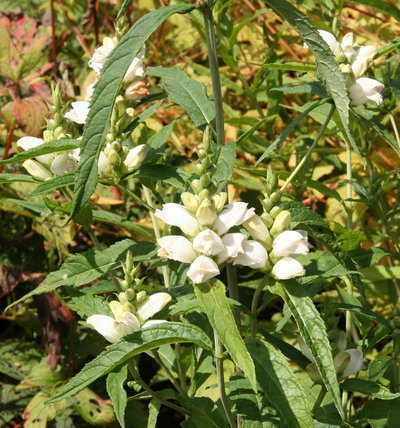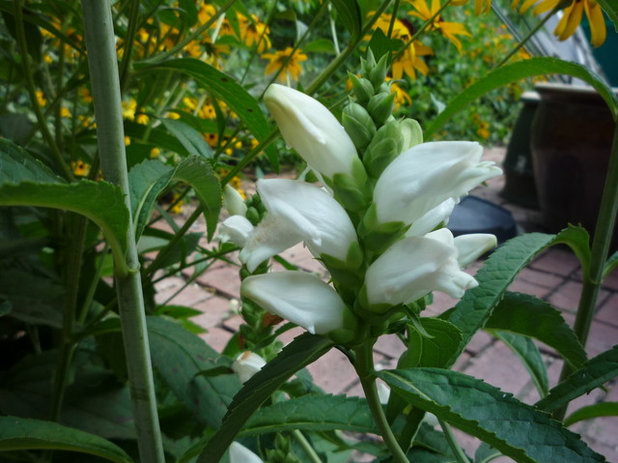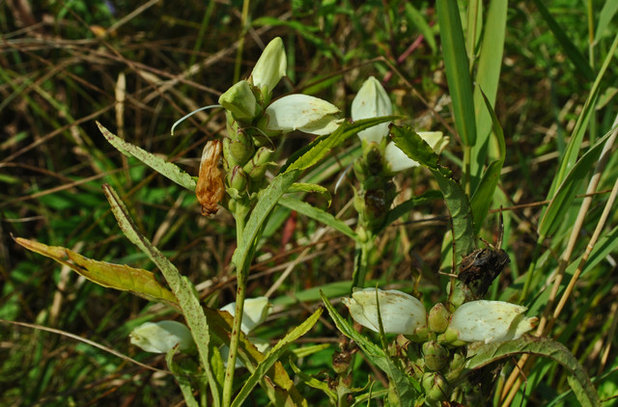I’m a sucker for native plants I can’t easily find at brick-and-mortar nurseries — especially if they’re tall, have white blooms and don’t require much work once established. You’re probably quite familiar with pink turtlehead (
Chelone obliqua) and the popular cultivar ‘Hot Lips’, but I bet you didn’t know there was a totally different species.
Chelone glabra is native from the Midwest all the way to the East Coast. It brings nice seasonal interest to the landscape in the awkward transition time between high summer and early fall, and its white blooms are perfect for moon gardening. Give it a try – it’s not hard to grow.
 Botanical name: Chelone glabraCommon names:
Botanical name: Chelone glabraCommon names: White turtlehead, turtlehead
Origin: Native from Minnesota south to Alabama and all points east, except Florida
Where it will grow: Hardy to -40 degrees Fahrenheit (USDA zones 3 to 8; find your zone)
Water requirement: Wet to moist soil
Light requirement: Full sun to partial shade
Mature size: 2 to 4 feet tall and 1 foot to 2 feet wide
Benefits and tolerances: Unique bloom color; tolerates wet soil; great for rain gardens or swales
Seasonal interest: Blooms in late summer to early fall
When to plant: Potted or bare-root plants can be planted from spring to fall; seed in fall or winter.
Photo by Michael Wolf
 Distinguishing traits.
Distinguishing traits. The white blooms provide hot summer gardens with a bit of coolness. Each flower won’t last more than a day or two, but don’t worry, new flowers appear daily for one to two weeks.
Native bumblebees are white turtlehead’s main pollinators, and it is also a host plant to the rare Baltimore checkerspot butterfly (
Euphydryas phaeton), Maryland’s official state insect.
How to use it. With such a small footprint, white turtlehead can be tucked into almost any established bed. It will slowly spread by rhizomes, and in several years you may have a small clump of a few stems with a nice upright appearance. Since it tolerates wet and boggy conditions, turtlehead is a good plant for rain gardens.
Photo by Jim Kingdon
 Planting notes.
Planting notes. This plant prefers a rich, moist soil, evident by the fact that it naturally appears in bogs, alongside streams, in open woodlands and in low meadows. Remarkably, it will also do well in clay soil.
Turtlehead benefits from at least a few hours of sun or dappled light; it flowers more in sun. If planted in sun, however, it will require consistent moisture; in shade it might lean toward the sun and require support. To avoid staking, you can also cut it back in May to create a shorter, bushier habit.
Photo by Aaron Carlson





